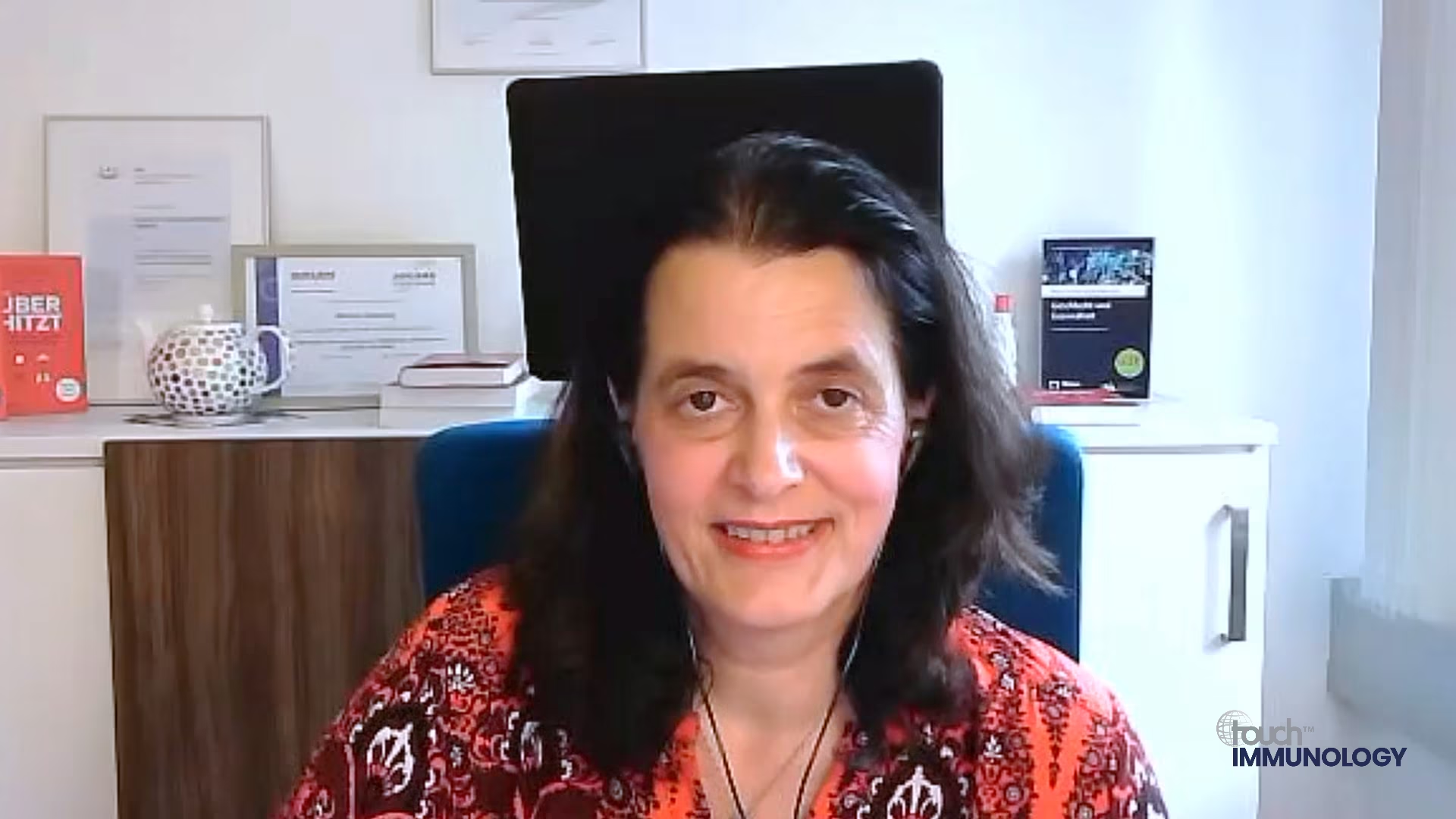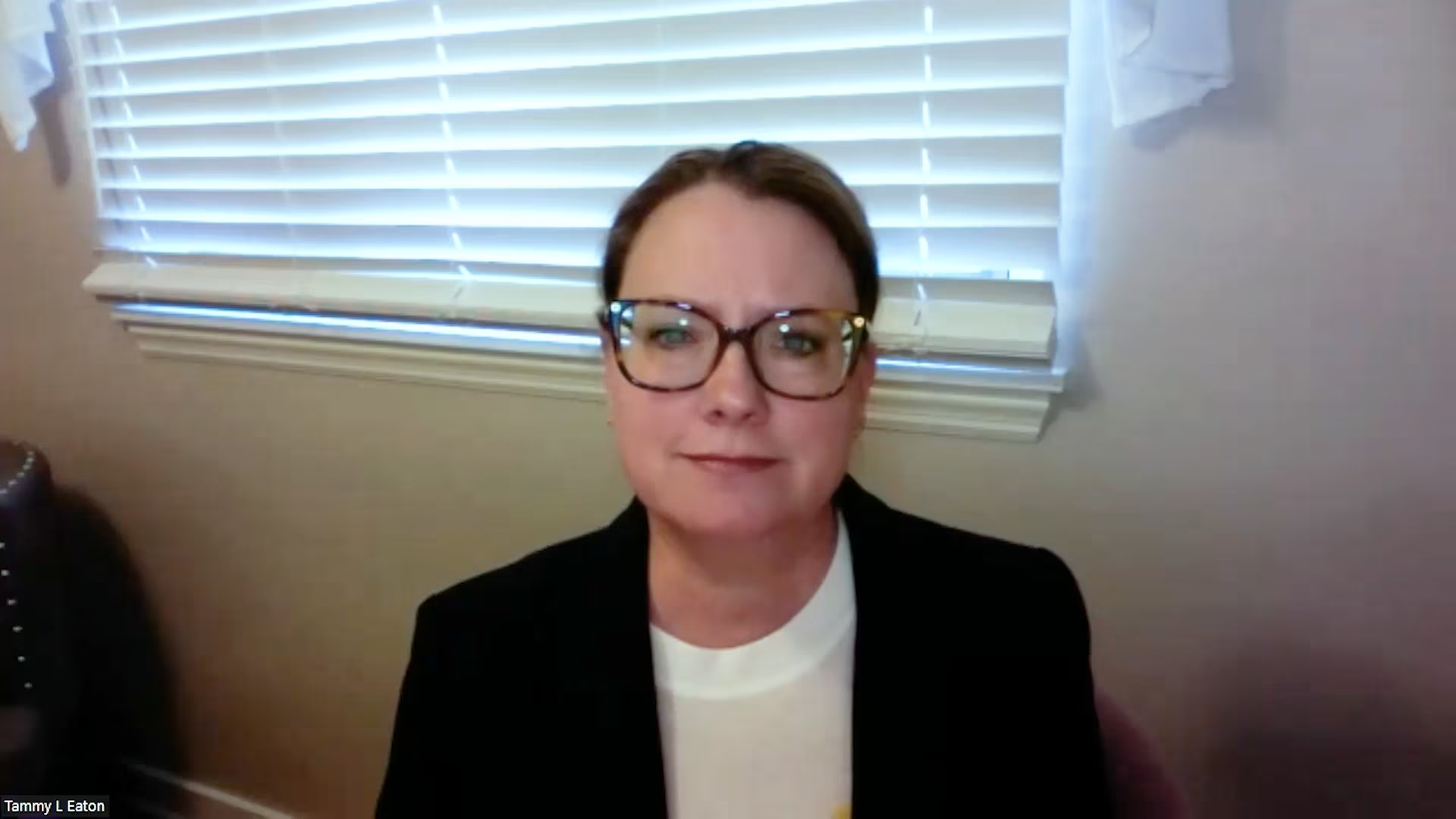Integrating teamwork in a healthcare setting could reduce burnout in health care professionals: Tammy L. Eaton, ATS 2023
Burnout is the emotional and physical exhaustion that can be caused in a work environment, that results in depersonalization and reduced personal accomplishment. In health care professionals (HCP) burnout was exacerbated during the COVID-19 pandemic. In this touchRESPIRATORY interview, we spoke with Dr. Tammy L. Eaton (University of Michigan, Ann Arbor, MI, USA) around the impact the COVID-19 pandemic had on HCP burnout, the association between HCP burnout and patient safety and how integrating teamwork in a healthcare setting can improve HCP well-being.
The abstract ‘Well-Being, Safety, and Burnout: Interprofessional Teams and the Roles They Play‘ (Session B81) was presented at ATS 2023, 19-24 May 2023.
Questions
- What impact has the COVID-19 pandemic had on burnout and well-being of health care professionals (HCP)? (0:16)
- What is the association between HCP wellbeing and burnout, and patient safety? (1:41)
- What interventions and strategies can be used to improve HCP well-being? (2:53)
- What clinical data surrounds teamwork in a healthcare setting? (4:01)
- What important next steps should be taken to integrate teamwork in a healthcare setting? (7:25)
Disclosures: Tammy L. Eaton has nothing to disclose in relation to this video interview.
Support: Interview and filming supported by Touch Medical Media Ltd. Interview conducted by Victoria Jones.
Filmed in coverage of the ATS Annual Meeting.
Click here for more coverage of ATS.
Transcript
What impact has the COVID-19 pandemic had on burnout and well-being of health care professionals (HCP)? (0:16)
I mean, we know that even before COVID, burnout, you know, burnout meaning a high degree of emotional exhaustion, depersonalization, compassion fatigue, low sense of personal accomplishment at work. So, all of those things when we think of with burnout, was already at a crisis level prior to COVID. I think the numbers are somewhere between thirty five percent and fifty four percent of nurses and physicians were experiencing burnout prior to COVID and the causes of these things can range from cultural, structural, organizational factors, you know, for example, excessive workloads lack of organizational support administrative burden. And we worry about the effects of burnout being anxiety depression within the individual, but COVID-19 was truly a uniquely traumatic experience and it caused further increasing rates of burnout. It just really highlighted the vulnerability of healthcare professionals to burnout and we also do know that burnout in this sense has unevenly impacted women and healthcare workers of colour because of pre-existing inequities around social determinants of health.
What is the association between HCP wellbeing and burnout, and patient safety? (1:41)
There’s a bidirectional relationship between clinician well-being and burnout. So, if you think about improving well-being would also improve patient care and safety and vice versa improving patient care and safety can also improve clinician well-being. So, burnout is actually viewed as a threat to patient safety, because you know, one reason is that idea of depersonalization, it’s presumed to result in poor interactions with patients and engagement, the healthcare professional is emotionally exhausted. Therefore, there’s decreased levels of that human interaction and just the healthcare professional not having that emotional bandwidth. Then also with staff turnover as a result of increasing levels of burnouts, which limits patient care, and it really opens up that avenue for increased patients errors, patient falls, bedsores, things that we think about in the hospital that are patient safety concerns.
What interventions and strategies can be used to improve HCP well-being? (2:53)
So despite the the negative impact of burnout in healthcare workers and healthcare systems internationally, there’s just limited evidence of feasible and sustainable interventions and looking at current strategies at the individual level, there’s a big push for healthcare workers improving well-being through self care meditation, yoga, you’re hearing a lot of diet, exercise, all the things that we do to to keep our body mind and spirit healthy. At the system level, I think we’re beginning to see a hint of improving communication and normalizing self-help seeking behaviours. But we really need to begin focusing on like meeting the true needs of the workforce, staffing, transportation, mental health services, and just ensuring that healthcare workers are earning a living wage.
What clinical data surrounds teamwork in a healthcare setting? (4:01)
We know that we’re beginning to see that development of strong team based care is important for both patients and clinicians and their experience, as well as good patient outcomes. So, in the past year, there’s been a couple really good studies looking at burnout and, you know, drivers of burnout. So, for example, in CHEST in 2022, Dr. Meta, and their team examined the drivers of burnout and this was within critical care teams. So what we learned from this study was most drivers of burnout were shared across the different provider types and the scheme and system level factors were the most significant contributors to ICU burnouts and we think a lot of times like that prevailing theory that ICU practitioners experience high burnout because patients are so sick and mortality is high. This study actually found that caring for extremely sick people with a high risk of dying does contribute to burnout, but that cases viewed as medically futile affects burnout at the patient and team level even more. This study is actually laying a good foundation that team based interventions may mitigate burnout, and if they may be more sustainable given that interconnected nature of burnout identified in this study. Then, there is another smaller study looking at the importance of belonging to a healthcare team by Dr. Gordon and team and this was also published in 2022 and what they had identified was that the idea of strained personal and team belonging and it prompted challenges and retention and staff morale and that the idea of the built environments, ranging from the type of workspaces and workstations to the layout of space was also influencing perceptions of belonging. And lastly, that the staff values included best possible care to help patients reach healthcare goals, kindness, respect, openness, and these were things that as the healthcare team doing together promoted their well-being. What I kind of alluded to at the beginning talking about COVID-19 and differences in burnout syndrome, Dr. Mall and team at critical care medicine in 2022 actually looked at those differences in burnout syndrome among different providers. Again, they found, not all professions and genders were equally impacted, and there was a disproportionate increase in burnout in nurses and female clinicians and that burnout syndrome actually increased during the pandemic, and was independent of whether one cared for a COVID-19 or not. So it wasn’t even just the act of caring for a COVID-19 patient that was increasing burnout during this time.
What important next steps should be taken to integrate teamwork in a healthcare setting? (7:25)
I think the next big steps really do need to focus on team based interventions and things that are gonna help across that entire multidisciplinary team. One being beginning to examine healthcare team relationships and like these previous studies this past year, the idea of belonging to a team and the impact that it has on burnout. I think looking at workplace culture, efforts focusing on unfair treatment at work, manageable workloads, improving communication, I think that considering the built environment and how that layout of the workspace, can affect teamwork. I think professional fulfilment. So, you know, what are the things that are positive actively affecting this? Is it the palliative care team that is able to help a patient plan a way to leave a legacy or critical care team reconnecting with patients that they cared for in the ICU and then I think finally seeing that nurses as well as women of any discipline were so adversely affected that we should have focused interventions to address this inequity of nurses, women, and healthcare workers of colour.
Subtitles and transcript are autogenerated







